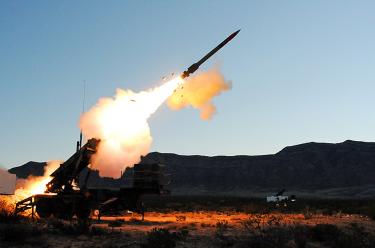Patriot Advanced Capability-3 (PAC-3) missile systems were moved to the Hualien and Taitung areas ahead of the Lunar New Year holiday to ensure that Taiwan’s southeastern border is adequately defended in case of an attack, sources at the Ministry of National Defense (MND) said.
The relocation was prompted by the Chinese People’s Liberation Army Air Force conducting several training missions around Taiwanese airspace over the past few months and a Chinese naval group consisting of China’s sole aircraft carrier and five other vessels sailing as close as 20 nautical miles (37km) of Taiwan’s southeastern air defense zone, the sources said.
The group sailed 90 nautical miles south of Pingtung County’s Oluanpi (鵝鑾鼻), Taiwan’s southernmost tip, as it headed for the western Pacific Ocean on a long-distance training mission, they said.
Air defenses in the area had previously relied mainly on Hawk anti-aircraft missiles, which only have a range of 40km, and the ministry had been planning to retire them as they are outdated, the sources said.
Hawk missiles were first deployed in Taiwan in 1959.
The ministry is planning to replace Hawk missiles with Tien Kung III surface-to-air missiles, but as there is a backlog in the new system’s production line, PAC-3 systems have been deployed to the nation’s east coast for the interim, they said.
Tien Kung III missiles were developed by the Chungshan Institute of Science and Technology, and are manufactured in Taiwan.
Meanwhile, ministry officials said that Taiwan’s air defense identification zone (ADIZ) — which was originally conceived as a rectangle — is missing a corner in the southeast due to an agreement with the US dating back to 1959, when the US cited fighter jets flying from Japan’s Ryuku Islands to the Philippines straying into Taiwan’s ADIZ and asked Taiwanese military officials to scale back the zone.
As a result, the distance between the southeast border of the ADIZ and Taiwan proper was shortened, the officials said, but added that PAC-3 missiles stationed on the east coast would help offset the shortened response time.
Source: Taipei Times - 2017/02/05





















